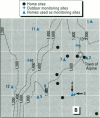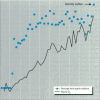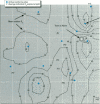Abstract
An ozone exposure assessment study was conducted in a Southern California community. The Harvard ozone passive sampler was used to monitor cohorts of 22 and 18 subjects for 8 weeks during the spring and fall of 1994, respectively. Ozone exposure variables included 12-hr personal O3 measurements, stationary outdoor O3 measurements from a continuous UV photometer and from 12-hr Harvard active monitors, and time-activity information. Results showed that personal O3 exposure levels averaged one-fourth of outdoor stationary O3 levels, attributable to high percentages of time spent indoors. Personal O3 levels were not predicted well by outdoor measurements. A random-effect general linear model analysis indicated that variance in personal exposure measurements was largely accounted for by random error (59-82%), followed by inter-subject (9-18%) and between-day (9-23%) random effects. The microenvironmental model performs differently by season, with the regression model for spring cohorts exhibiting two times the R2 of the fall cohorts (R2 = 0.21 vs. 0.09). When distance from the stationary monitoring site, elevation, and traffic are taken into account in the microenvironmental models, the adjusted R2 increased almost twofold for the fall personal exposure data. The low predictive power is due primarily to the apparent spatial variation of outdoor O3 and errors in O3 measurements and in time-activity records (particularly in recording the use of air conditioning). This study highlights the magnitude of O3 exposure misclassification in epidemiological settings and proposes an approach to reduce exposure uncertainties in assessing air pollution health effects.
Full text
PDF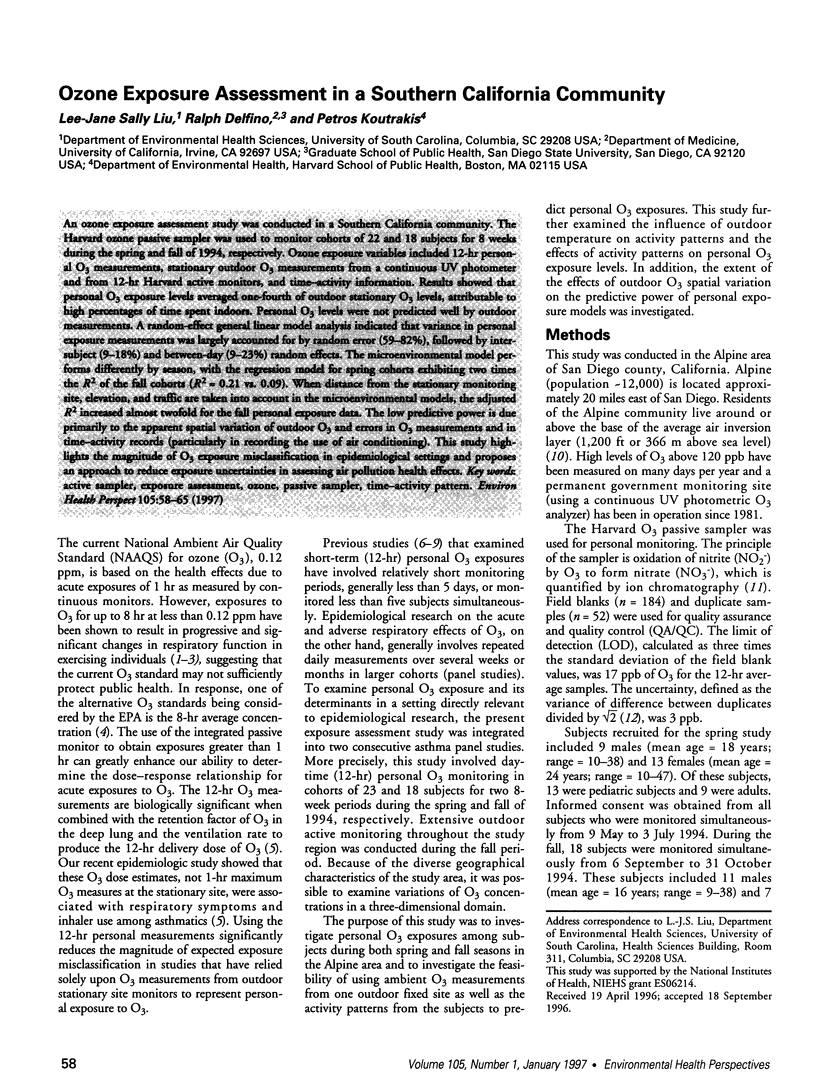
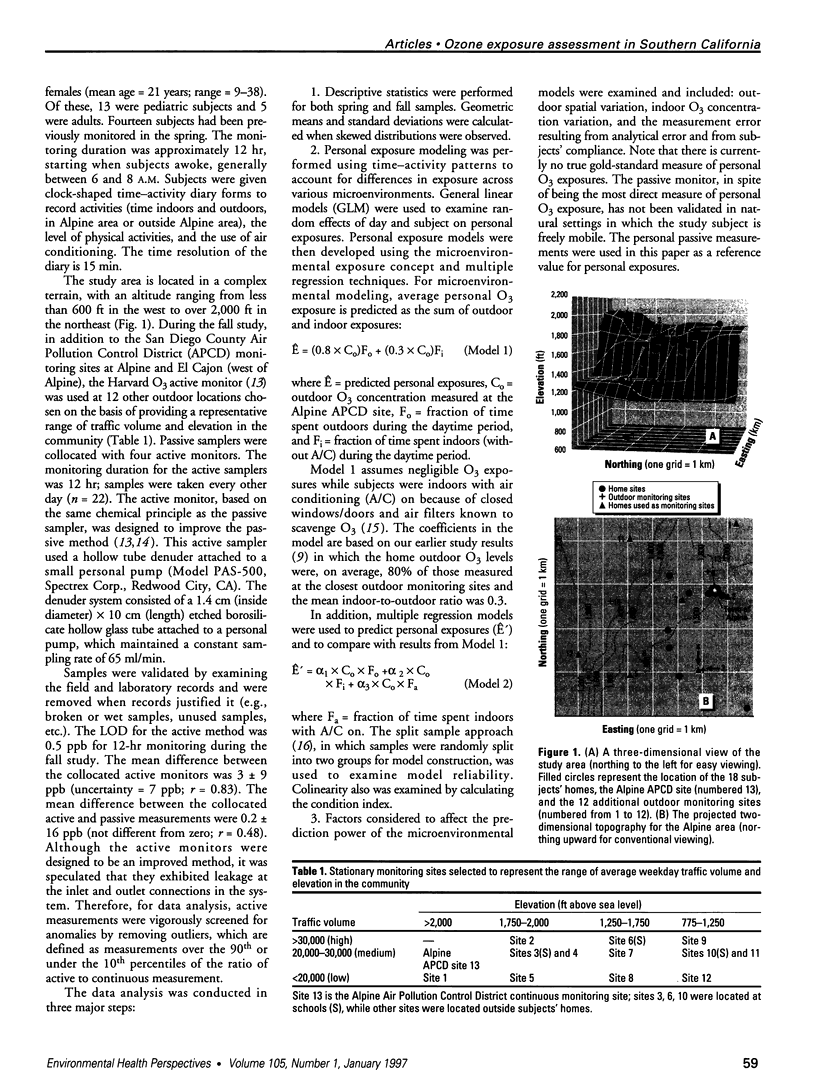
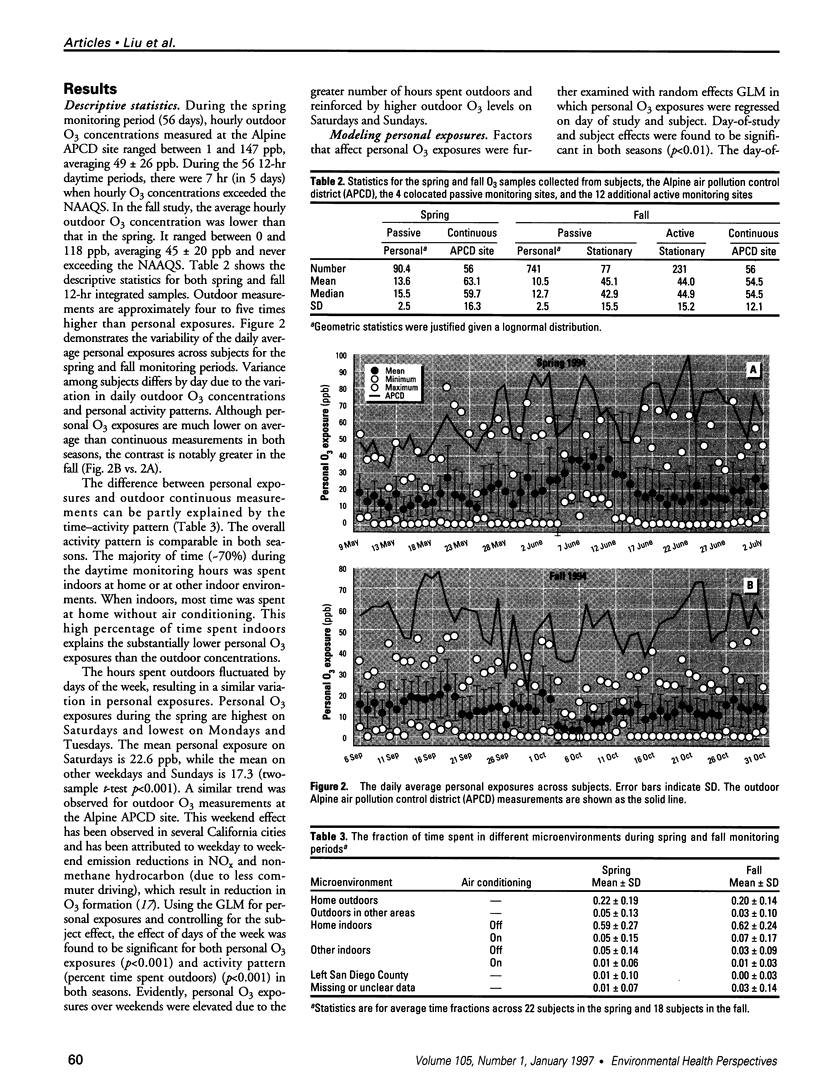


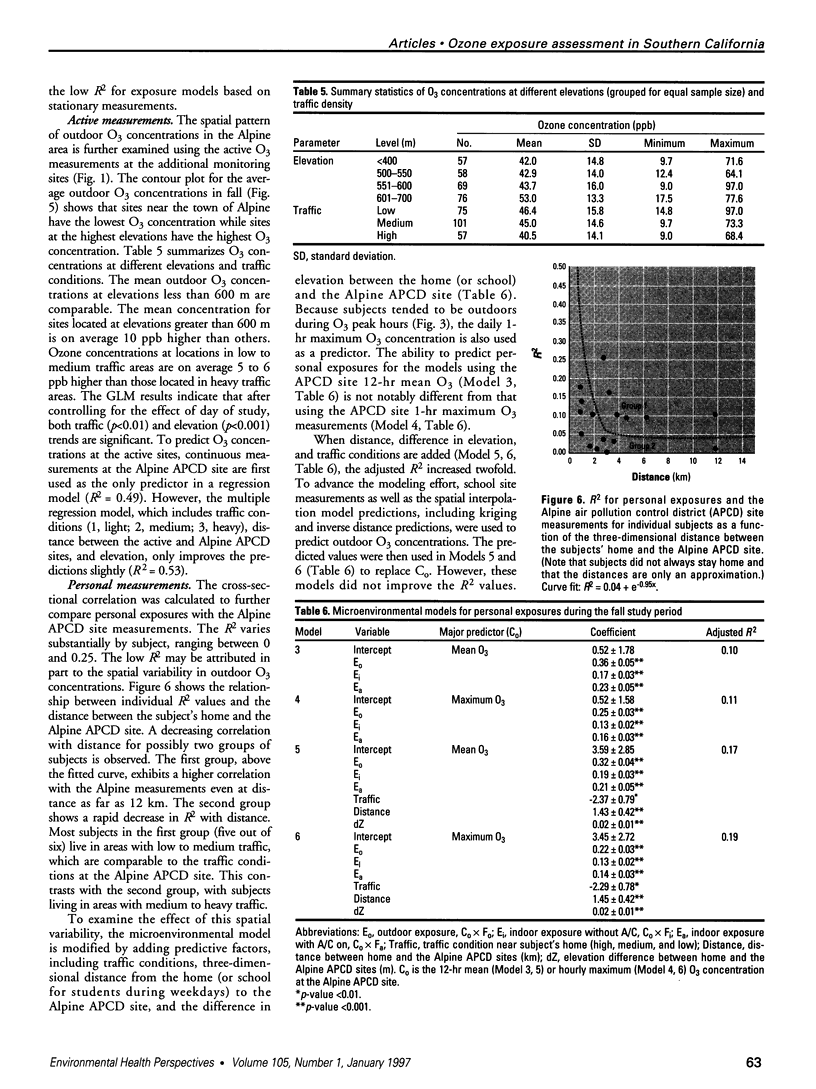
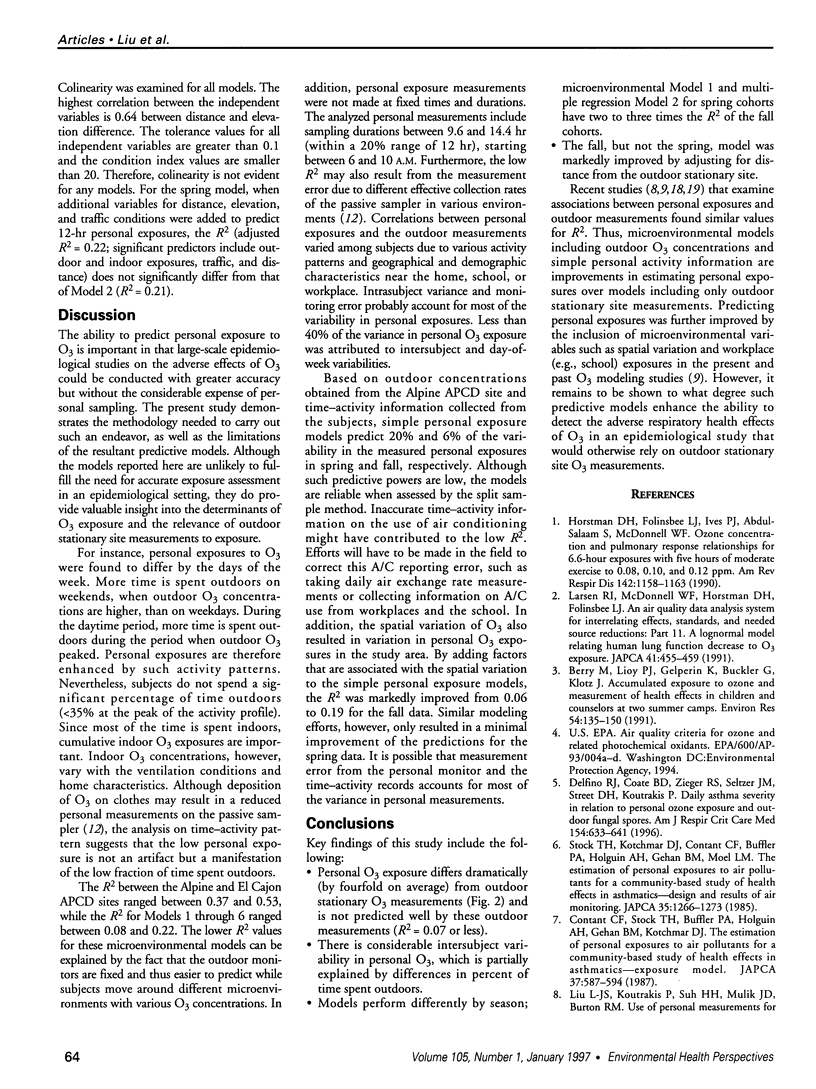
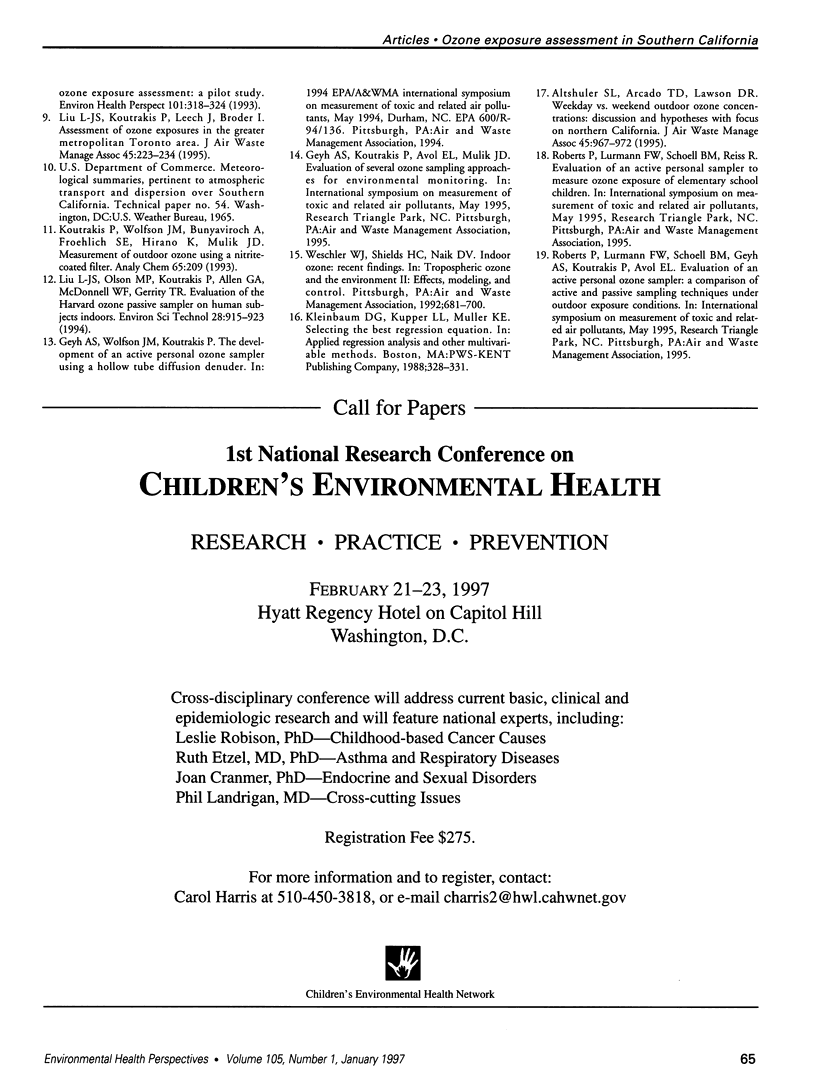
Images in this article
Selected References
These references are in PubMed. This may not be the complete list of references from this article.
- Berry M., Lioy P. J., Gelperin K., Buckler G., Klotz J. Accumulated exposure to ozone and measurement of health effects in children and counselors at two summer camps. Environ Res. 1991 Apr;54(2):135–150. doi: 10.1016/s0013-9351(05)80096-9. [DOI] [PubMed] [Google Scholar]
- Contant C. F., Stock T. H., Buffler P. A., Holguin A. H., Gehan B. M., Kotchmar D. J. The estimation of personal exposures to air pollutants for a community-based study of health effects in asthmatics--exposure model. JAPCA. 1987 May;37(5):587–594. doi: 10.1080/08940630.1987.10466246. [DOI] [PubMed] [Google Scholar]
- Delfino R. J., Coate B. D., Zeiger R. S., Seltzer J. M., Street D. H., Koutrakis P. Daily asthma severity in relation to personal ozone exposure and outdoor fungal spores. Am J Respir Crit Care Med. 1996 Sep;154(3 Pt 1):633–641. doi: 10.1164/ajrccm.154.3.8810598. [DOI] [PubMed] [Google Scholar]
- Horstman D. H., Folinsbee L. J., Ives P. J., Abdul-Salaam S., McDonnell W. F. Ozone concentration and pulmonary response relationships for 6.6-hour exposures with five hours of moderate exercise to 0.08, 0.10, and 0.12 ppm. Am Rev Respir Dis. 1990 Nov;142(5):1158–1163. doi: 10.1164/ajrccm/142.5.1158. [DOI] [PubMed] [Google Scholar]
- Larsen R. I., McDonnell W. F., Horstman D. H., Folinsbee L. J. An air quality data analysis system for interrelating effects, standards, and needed source reductions: Part 11. A lognormal model relating human lung function decrease to O3 exposure. J Air Waste Manage Assoc. 1991 Apr;41(4):455–459. doi: 10.1080/10473289.1991.10466858. [DOI] [PubMed] [Google Scholar]
- Liu L. J., Koutrakis P., Leech J., Broder I. Assessment of ozone exposures in the greater metropolitan Toronto area. J Air Waste Manag Assoc. 1995 Apr;45(4):223–234. doi: 10.1080/10473289.1995.10467362. [DOI] [PubMed] [Google Scholar]
- Stock T. H., Kotchmar D. J., Contant C. F., Buffler P. A., Holguin A. H., Gehan B. M., Noel L. M. The estimation of personal exposures to air pollutants for a community-based study of health effects in asthmatics--design and results of air monitoring. J Air Pollut Control Assoc. 1985 Dec;35(12):1266–1273. doi: 10.1080/00022470.1985.10466029. [DOI] [PubMed] [Google Scholar]




